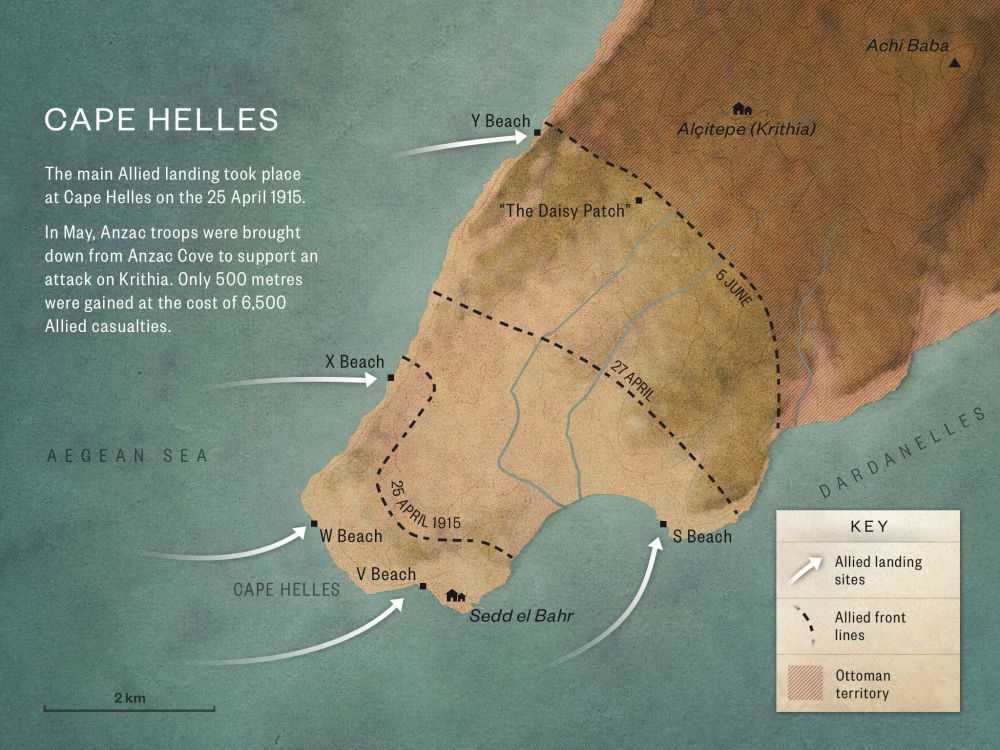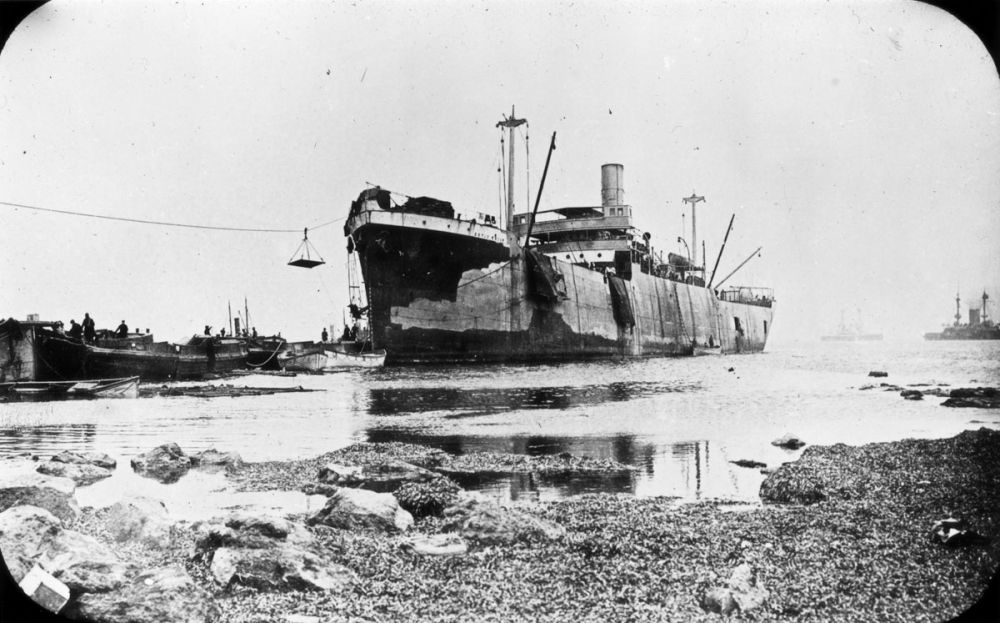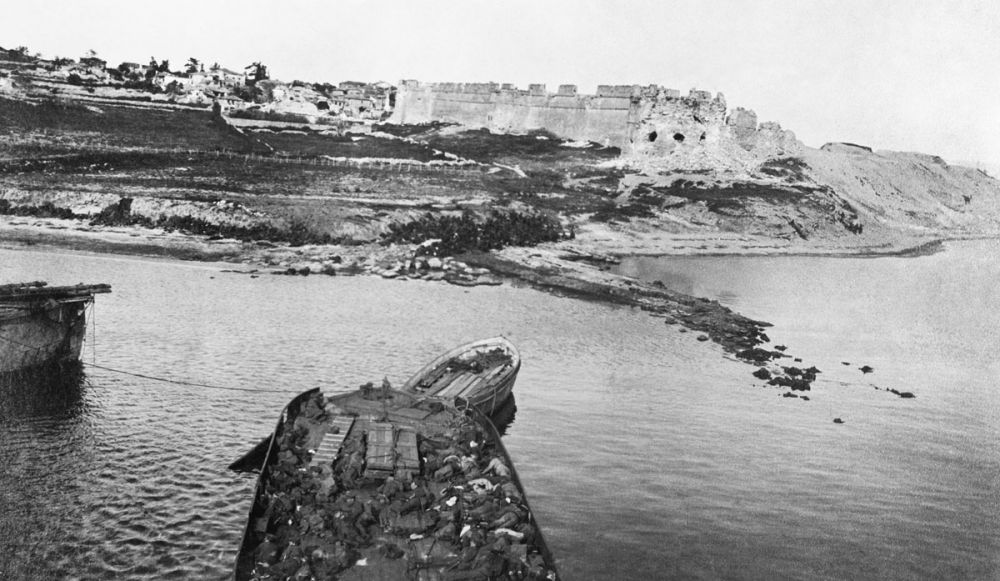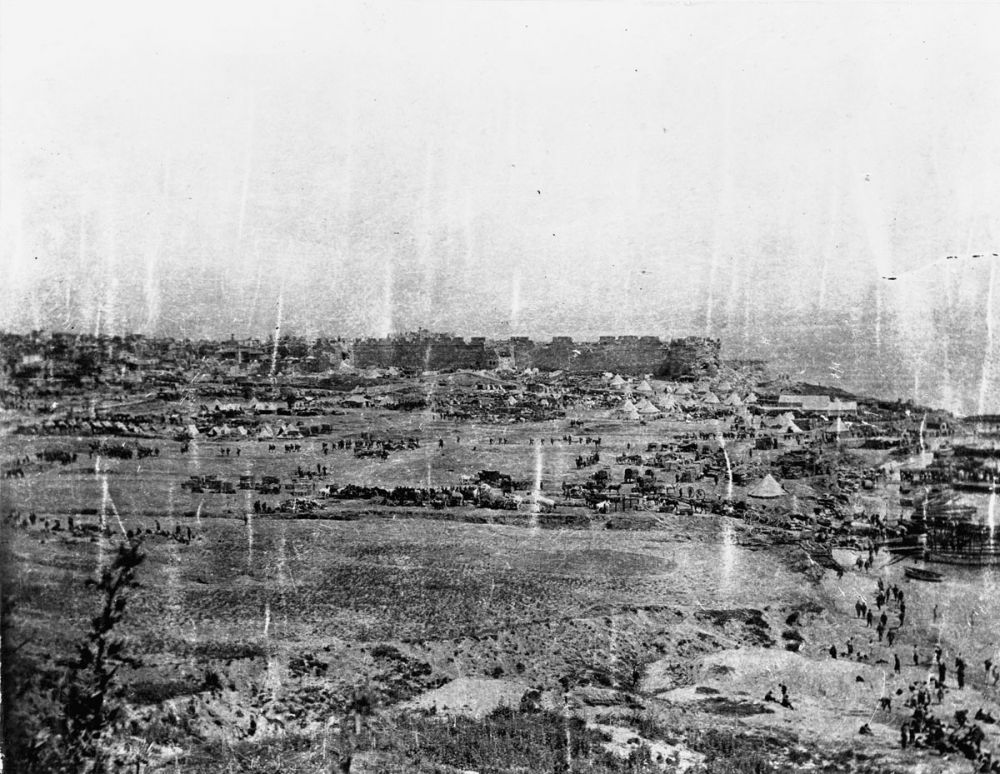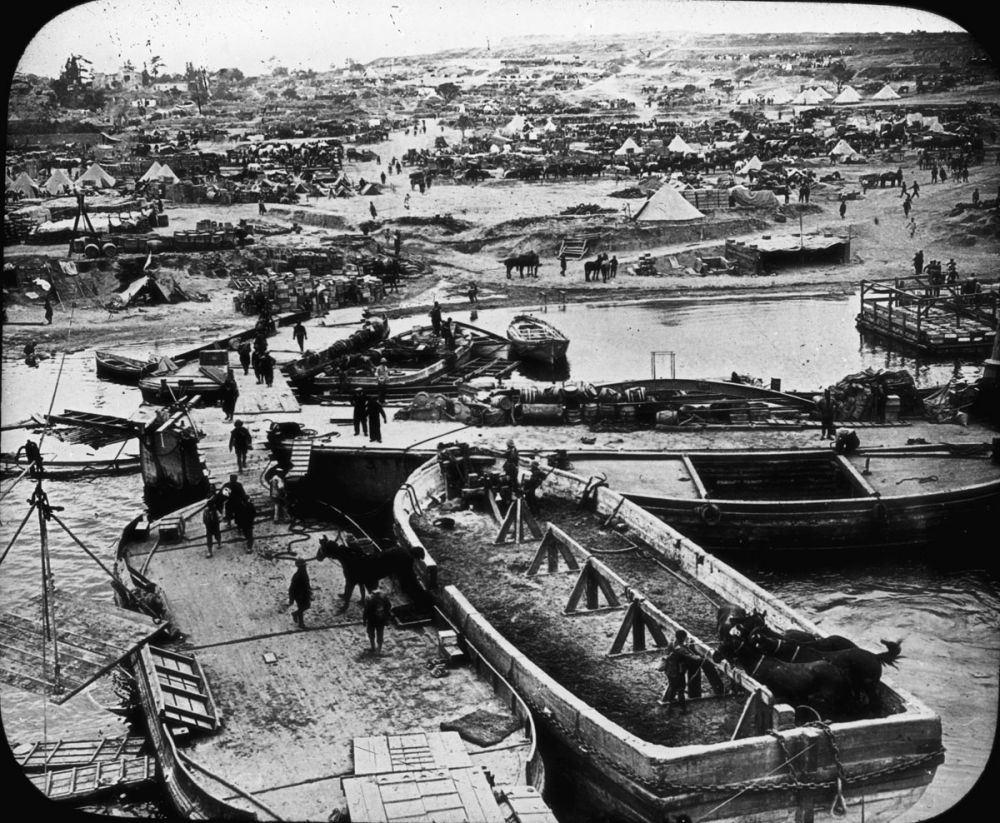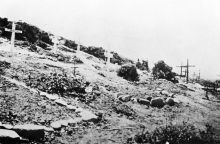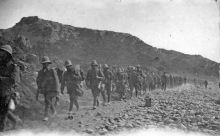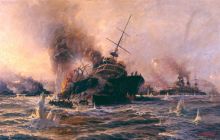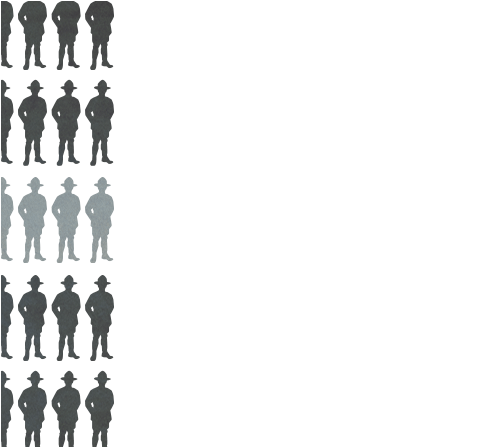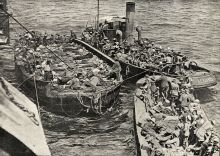V Beach
You are standing at the water’s edge on V Beach, and this became the amphitheatre of death for the British soldiers who landed here in broad daylight on 25 April 1915.
In front of us is the castle of Seddulbair, and you can see the damage done to it by the allied naval bombardment. On the day of the landing, these ruins were held by Turkish Infantry. Next to the castle, on the left, is the village of Seddulbair. On 25 April there were open fields in front of it, and further to the left, on the high ground where the monument now stands, was a Turkish artillery battery – which is marked by the flag. Turkish riflemen occupied all these positions covering the beach.
If you turn to your left you can see, on the headland, the very prominent Memorial, which incorporates the British Memorial to the Missing. Along the ridge overlooking you, were Ottoman defences with riflemen ready to fire down. This is a natural amphitheatre that stretches around, back around through the forward part of the village, to the castle itself. Anything coming down on to this beach would be shot down.
On the morning of 25 April 1915, the British 29th Division landed here in daylight. The centrepiece of the landing was the old transport ship River Clyde, which was converted into a landing ship. Holes had been cut in its sides and ramps erected, so that the British soldiers could run down and stream ashore. This line of rocks where you stand marks the spot where the River Clyde ran aground. It was going to be a simultaneous landing with two infantry battalions carried in boats – but the very strong current meant that the River Clyde arrived first.
If you can imagine the River Clyde, with barges being towed behind, grounding about 80 metres out from where you stand. The barges were used like a pontoon bridge to form a walkway from ship to shore allowing the infantry to run across and charge inland. In fact, the ship’s captain, Commander Unwin, won a Victoria Cross for jumping into the water under fire and trying to keep the row of barges together.
There were machine guns mounted on the River Clyde firing at the village and the fort. As the ship grounded, the two side doors opened and men, came racing down the ramps, packed one behind the other while Turkish infantry opened fire and shot them down.
The Ottoman riflemen fired 15 rounds a minute and soldiers on the River Clyde thought it was machine gun fire. In minutes, each barge between the ship and the shore was crammed with dead and dying men, and anyone who moved was shot by Turkish snipers. Some survivors who got to the beach ran and took cover in that small clay bank by the tree just in front of you – and stayed there for the rest of the day. Any attempt to move was to die.
A British airman flying a seaplane overhead said that the waters ran red with blood. The British attackers were stuck on this beach for two days before an advance from the next bay across, W Beach, allowed them to clear the village. This beach would become one of the major logistic bases for the British and French armies at Cape Helles, and it was here that the New Zealanders from Anzac Cove landed on 6 May to support the British advance.


